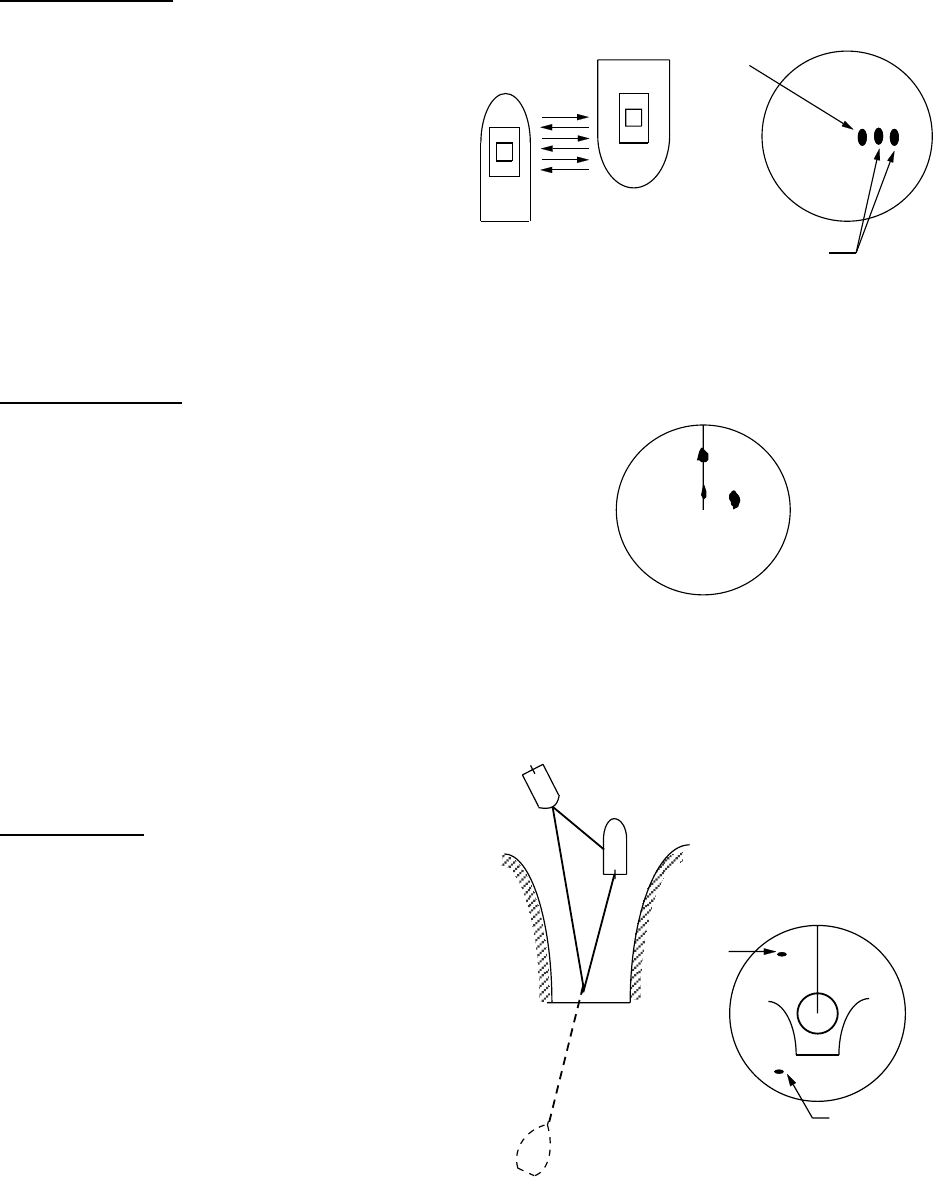
2. RADAR OPERATION
2-34
2.27 Interpreting the Radar Display
2.27.1 False echoes
Occasionally echo signals appear on the screen at positions where there is no target or
disappear even if there are targets. False target situations may be recognized, however, if
you understand why they are displayed. Typical false echoes are shown below.
Multiple echoes
Multiple echoes occur when a transmitted
pulse returns from a solid object like a
large ship, bridge, or breakwater. A
second, a third or more echoes may be
observed on the display at double, triple or
other multiples of the actual range of the
target as shown below. Multiple reflection
echoes can be reduced and often
removed by decreasing the gain
(sensitivity) or properly adjusting the A/C
SEA control.
Sidelobe echoes
Every time the radar pulse is transmitted,
some radiation escapes on each side of
the beam. This stray RF is called a
“sidelobe.” If a target exists where it can
be detected by the sidelobes as well as
the main lobe, the side echoes may be
represented on both sides of the true echo
at the same range. Sidelobes show
usually only on short ranges and from
strong targets. They can be reduced
through careful reduction of the gain or
proper adjustment of the A/C SEA control.
Virtual image
A relatively large target close to your ship
may show at two positions on the screen.
One of them is the true echo directly
reflected by the target and the other is a
false echo which is caused by the mirror
effect of a large object on or close to your
ship as shown in the figure below. If your
ship comes close to a large metal bridge,
for example, such a false echo may
temporarily be seen on the screen.
Virtual image
Own ship
Target
Tr ue
echo
Multiple
echo
Multiple echoes
Target B
(True)
Target B
(Spurious)
Target A
Sidelobe echoes
Tr ue
echo
False
echo
Own
ship
Target ship
Mirror image
of target ship
Virtual image


















